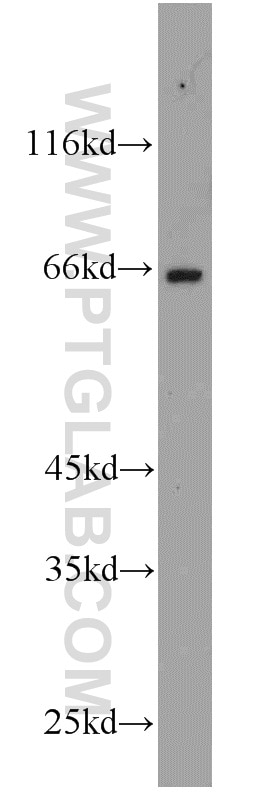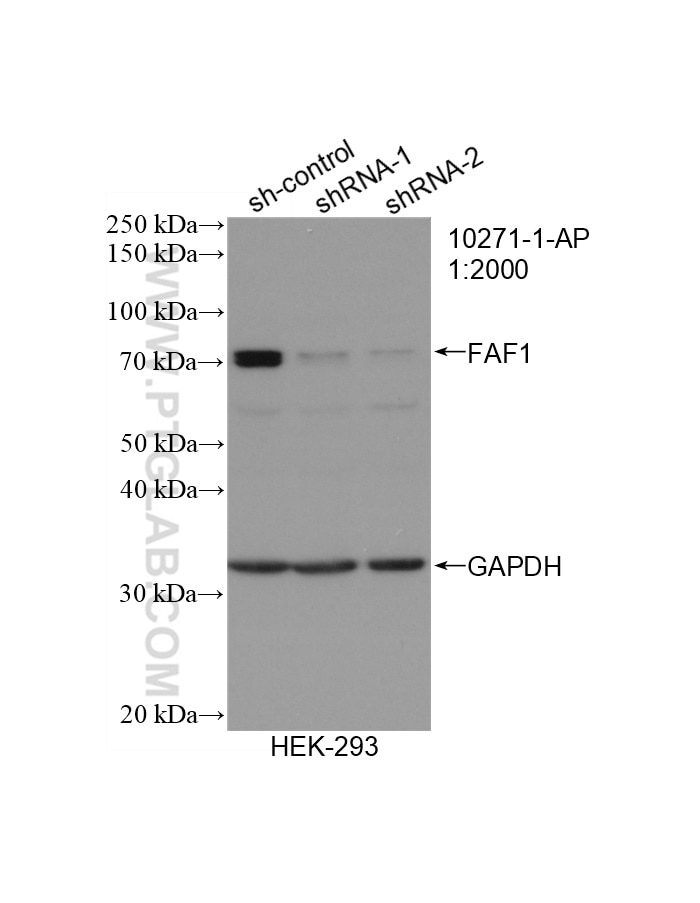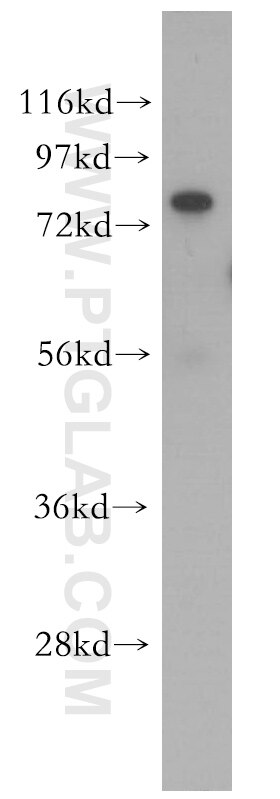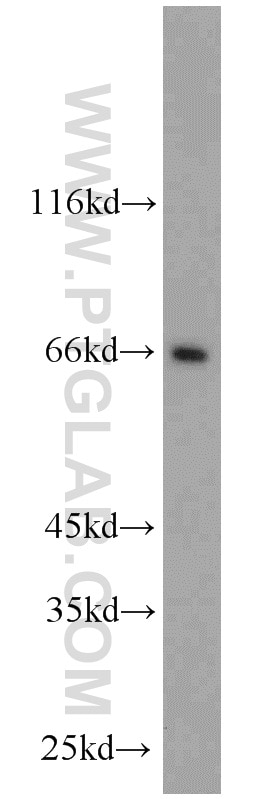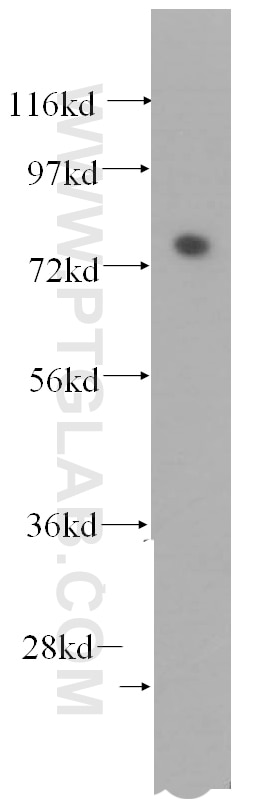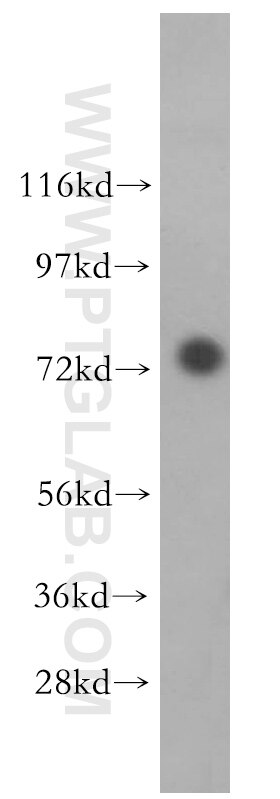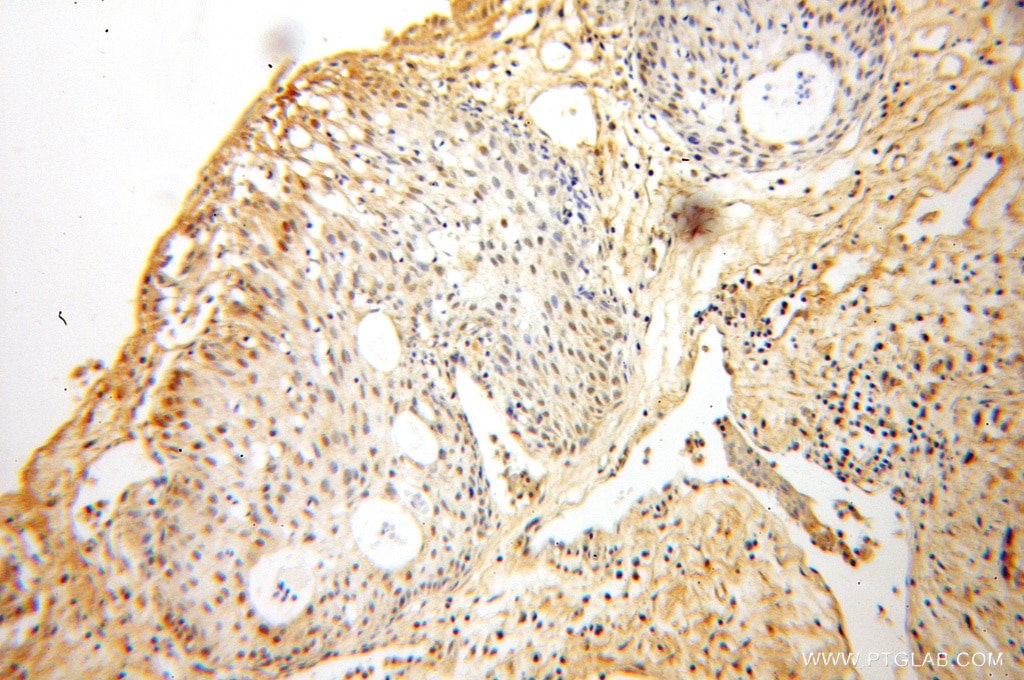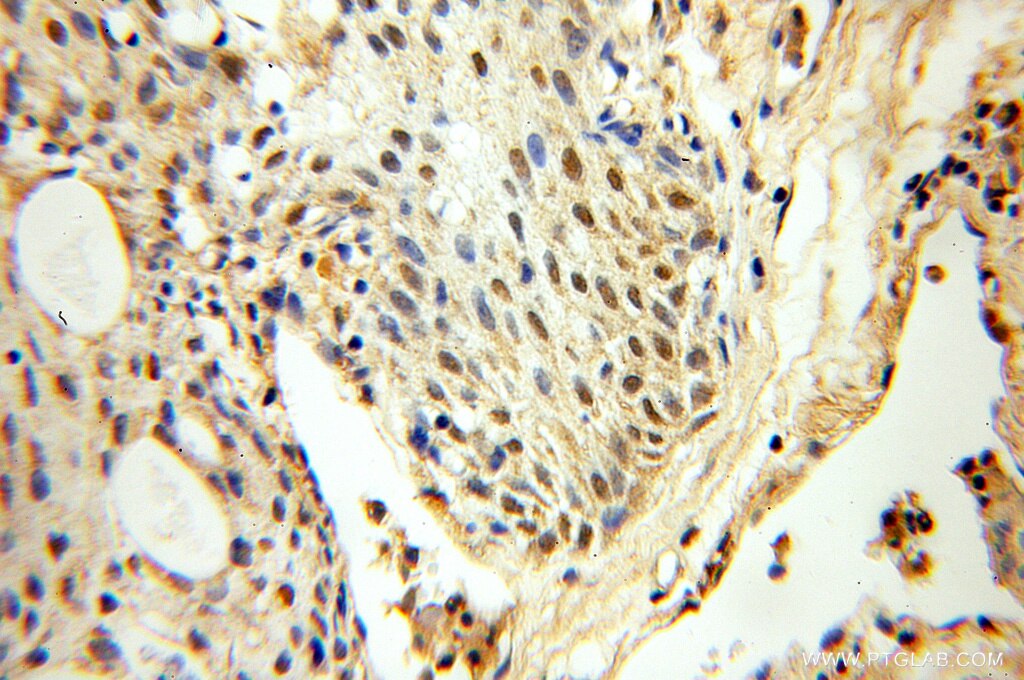- Phare
- Validé par KD/KO
Anticorps Polyclonal de lapin anti-FAF1
FAF1 Polyclonal Antibody for WB, IHC, ELISA
Hôte / Isotype
Lapin / IgG
Réactivité testée
Humain, rat, souris
Applications
WB, IF, IHC, ELISA
Conjugaison
Non conjugué
N° de cat : 10271-1-AP
Synonymes
Galerie de données de validation
Applications testées
| Résultats positifs en WB | cellules HeLa, cellules HEK-293, cellules K-562, tissu cérébral de souris, tissu testiculaire de souris |
| Résultats positifs en IHC | tissu de cancer de la prostate humain il est suggéré de démasquer l'antigène avec un tampon de TE buffer pH 9.0; (*) À défaut, 'le démasquage de l'antigène peut être 'effectué avec un tampon citrate pH 6,0. |
Dilution recommandée
| Application | Dilution |
|---|---|
| Western Blot (WB) | WB : 1:500-1:1000 |
| Immunohistochimie (IHC) | IHC : 1:20-1:200 |
| It is recommended that this reagent should be titrated in each testing system to obtain optimal results. | |
| Sample-dependent, check data in validation data gallery | |
Applications publiées
| KD/KO | See 2 publications below |
| WB | See 5 publications below |
| IHC | See 2 publications below |
| IF | See 5 publications below |
Informations sur le produit
10271-1-AP cible FAF1 dans les applications de WB, IF, IHC, ELISA et montre une réactivité avec des échantillons Humain, rat, souris
| Réactivité | Humain, rat, souris |
| Réactivité citée | Humain, souris |
| Hôte / Isotype | Lapin / IgG |
| Clonalité | Polyclonal |
| Type | Anticorps |
| Immunogène | FAF1 Protéine recombinante Ag0407 |
| Nom complet | Fas (TNFRSF6) associated factor 1 |
| Masse moléculaire calculée | 650aa, 74 kDa |
| Poids moléculaire observé | 74 kDa |
| Numéro d’acquisition GenBank | BC004970 |
| Symbole du gène | FAF1 |
| Identification du gène (NCBI) | 11124 |
| Conjugaison | Non conjugué |
| Forme | Liquide |
| Méthode de purification | Purification par affinité contre l'antigène |
| Tampon de stockage | PBS with 0.02% sodium azide and 50% glycerol |
| Conditions de stockage | Stocker à -20°C. Stable pendant un an après l'expédition. L'aliquotage n'est pas nécessaire pour le stockage à -20oC Les 20ul contiennent 0,1% de BSA. |
Informations générales
FAF1 was detected most abundant in testis, slightly less abundant in skeletal muscle and heart, followed by prostate, thymus, ovary, small intestine, and colon, but not in the peripheral blood leukocytes.The N-terminal region (amino acid 1∼201) including the upstream ubiquitin homology domain of hFAF1 could bind with the death domain of Fas, which mediates programmed cell death, also called apoptosis, in a number of organ systems, notably the immune and nervous systems.
Protocole
| Product Specific Protocols | |
|---|---|
| WB protocol for FAF1 antibody 10271-1-AP | Download protocol |
| IHC protocol for FAF1 antibody 10271-1-AP | Download protocol |
| Standard Protocols | |
|---|---|
| Click here to view our Standard Protocols |
Publications
| Species | Application | Title |
|---|---|---|
Cell Death Differ FAF1 mediates regulated necrosis through PARP1 activation upon oxidative stress leading to dopaminergic neurodegeneration. | ||
Hum Mol Genet Accumulation of the parkin substrate, FAF1, plays a key role in the dopaminergic neurodegeneration. | ||
Cancer Manag Res MiR-26a-5p Serves as an Oncogenic MicroRNA in Non-Small Cell Lung Cancer by Targeting FAF1.
| ||
Neuroreport Fas-associated factor 1 promotes in neurofibrillary tangle-mediated cell death of basal forebrain cholinergic neurons in P301L transgenic mice. |
